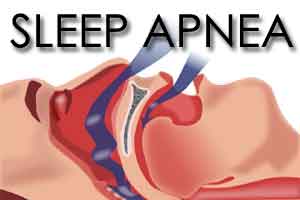- Home
- Editorial
- News
- Practice Guidelines
- Anesthesiology Guidelines
- Cancer Guidelines
- Cardiac Sciences Guidelines
- Critical Care Guidelines
- Dentistry Guidelines
- Dermatology Guidelines
- Diabetes and Endo Guidelines
- Diagnostics Guidelines
- ENT Guidelines
- Featured Practice Guidelines
- Gastroenterology Guidelines
- Geriatrics Guidelines
- Medicine Guidelines
- Nephrology Guidelines
- Neurosciences Guidelines
- Obs and Gynae Guidelines
- Ophthalmology Guidelines
- Orthopaedics Guidelines
- Paediatrics Guidelines
- Psychiatry Guidelines
- Pulmonology Guidelines
- Radiology Guidelines
- Surgery Guidelines
- Urology Guidelines
Implanted device can improve central sleep apnea treatment: Lancet Study

New York : An implanted nerve stimulator significantly improves symptoms in those with central sleep apnea, without causing serious side effects, show results from an international study.
Unlike the more common obstructive sleep apnea, in which the airway partially collapses and causes pauses in breathing, central sleep apnea (CSA) occurs when the brain fails to control breathing during sleep.
"Central sleep apnea is a serious concern because it affects about a third of people with heart failure and it's known to make the condition worse," said co-lead author William Abraham from the Ohio State University Wexner Medical Center in the US.
"Currently, we don't have good treatments available. Positive airway pressure devices have been used, but many patients don't tolerate them well and a recent study showed them to be harmful," Abraham noted.
The research team tested the safety and effectiveness of a transvenous phrenic nerve stimulator made by US-based Respicardia Inc at 31 hospitals in the US, Germany and Poland.
Much like a pacemaker, it sends a regular signal telling the diaphragm to breathe during sleep.
In the randomised study, 151 patients were implanted with the device.
Ten were excluded due to non-study related medical issues or deaths, exiting the study or missing visits.
During the first six months of evaluation, 68 devices were activated for treatment, while 73 were left inactive as the control group.
"This tells us the effects of neuro stimulation are clinically relevant and this could be a promising therapy for those with central sleep apnea," Abraham noted.

Disclaimer: This site is primarily intended for healthcare professionals. Any content/information on this website does not replace the advice of medical and/or health professionals and should not be construed as medical/diagnostic advice/endorsement or prescription. Use of this site is subject to our terms of use, privacy policy, advertisement policy. © 2020 Minerva Medical Treatment Pvt Ltd